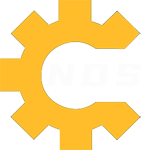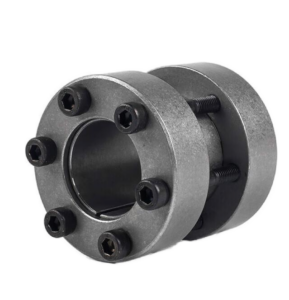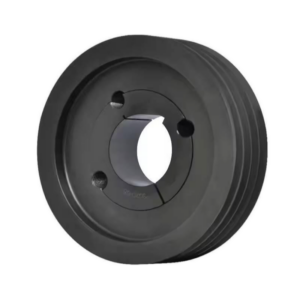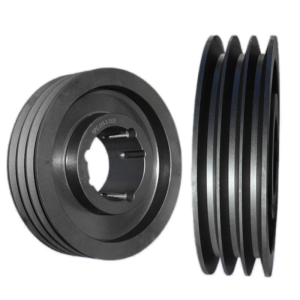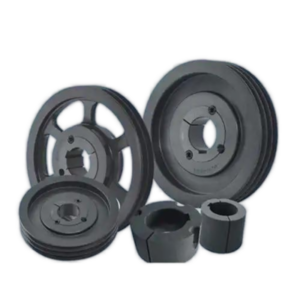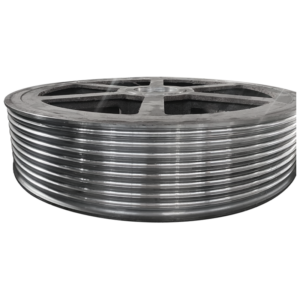In the world of mechanics, a coupling is a crucial device used to connect two shafts together at their ends for the purpose of transmitting power. A primary function of most couplings is to join two pieces of rotating equipment while allowing for some degree of misalignment, end movement, or both. They are fundamental components in everything from car engines and manufacturing conveyor belts to precision robotics and power generation turbines.
The primary purposes of a coupling are to:
- Transmit Power: The core function is to transfer rotational motion and torque from one shaft to another.
- Accommodate Misalignment: Perfect alignment between two shafts is often impossible to achieve or maintain due to deflection, thermal expansion, or settlement. Couplings compensate for this.
- Absorb Shock and Vibration: Certain types of couplings can dampen shock loads from sudden torque changes and reduce vibrations, protecting both the driver and driven equipment.
- Permit End Float: They can allow for axial movement of the shafts without placing undue stress on the bearings.
Misalignments are categorized into three types:
- Angular Misalignment: The shafts are at an angle to each other.
- Parallel Misalignment: The shafts are parallel but not perfectly aligned axially.
- Axial Misalignment (End Float): The shafts move closer together or farther apart along their axis.
Common Types of Couplings and Their Use Cases
Couplings can be broadly categorized as rigid or flexible.
1. Rigid Couplings
Rigid couplings are used where precise alignment is required and guaranteed. They do not tolerate any misalignment and must be used only when shafts are perfectly aligned. Their simplicity makes them inexpensive and capable of high torque transmission.
- Sleeve or Muff Coupling: One of the simplest types, it consists of a single cylindrical sleeve that fits over the ends of the two shafts. A key and keyway are typically used to lock the shafts to the sleeve.
- Use Case: Low-to-medium power applications where alignment is precise and maintenance is minimal, such as connecting lineshafts or in simple conveyors.
- Flanged Coupling: This common type features two flanged hubs, each attached to a shaft. The flanges are bolted together to create a rigid connection. Often, a precision-machined spigot and recess help ensure perfect alignment.
- Use Case: Heavy-duty applications where high torque must be transmitted and alignment is precise. Common in large pumps, industrial fans, and marine propulsion systems.
2. Flexible Couplings
Flexible couplings are the most common type, designed to accommodate various misalignments while transmitting torque.
- Jaw Coupling: This popular coupling consists of two metal hubs with “jaws” and an elastomeric spider insert between them. The spider absorbs shock and misalignment while transmitting torque.
- Use Case: Excellent for general-purpose applications. Common in small motors, pumps, and conveyors. Ideal for situations requiring moderate misalignment capacity and vibration damping.
- Gear Coupling: Comprised of two hubs with external gear teeth that mesh with the internal gear teeth of a sleeve. This design allows for significant angular and parallel misalignment while transmitting very high torque.
- Use Case: Heavy industrial machinery like rolling mills, large pumps, compressors, and steel processing equipment where high torque and misalignment are present.
- Grid Coupling: Similar to a gear coupling but uses a spring-like steel grid that engages with grooves in the coupling hubs. The grid flexes to accommodate misalignment and absorbs shock loads.
- Use Case: Applications with high shock loads and moderate misalignment, such as crushers, punching presses, and piston compressors.
- Disc Coupling: Uses a pack of thin, flexible metal discs arranged in a specific pattern. The discs flex to accommodate misalignment while maintaining high torsional stiffness (no backlash).
- Use Case: High-speed, precision applications requiring zero backlash and reliable performance. Used in turbines, CNC machine tool spindles, and aerospace systems.
- Universal Joint (U-Joint): A mechanical joint that uses a cross-shaped yoke to connect shafts at an angle. It is not constant-velocity, meaning the output speed fluctuates if the angle is severe.
- Use Case: Primarily for transmitting power between shafts at a significant angle, most famously in automotive drive shafts.
- Oldham Coupling: Features three parts: two hubs and a center disc. The disc has tongues on each side at 90 degrees to each other, which slide in slots on the hubs. It excellently accommodates parallel misalignment.
- Use Case: Applications where parallel misalignment is the primary concern, such as in small CNC stages and printers.
- Beam Coupling (Helical Coupling): Made from a single piece of metal cut in a helical pattern. It is simple, zero-backlash, and flexible.
- Use Case: Low-torque motion control applications requiring precision and zero backlash, common in encoders, stepper motors, and optical instruments.
- Fluid Coupling (Hydraulic Coupling): Transmits power through a fluid (usually oil), using a pump impeller on the input side and a turbine runner on the output side. It provides very smooth acceleration and protects against overload.
- Use Case: Heavy machinery with high inertia loads, such as crushers, conveyors, and locomotive transmissions, to provide smooth, shock-free starts.
Selecting the Right Coupling
Choosing the correct coupling is critical for system performance and longevity. Key factors to consider include:
- Type and Amount of Misalignment: What misalignment must the coupling accommodate?
- Torque Requirements: What is the application’s maximum and continuous torque?
- Speed of Operation: High-speed applications require carefully balanced couplings.
- Space Constraints: How much physical space is available for the coupling?
- Backlash: Does the application require zero-backlash for precision positioning?
- Environmental Conditions: Will the coupling be exposed to extreme temperatures, chemicals, or abrasives?
By understanding the different types of couplings and their intended applications, engineers and technicians can ensure efficient, reliable, and long-lasting operation of mechanical power transmission systems.
